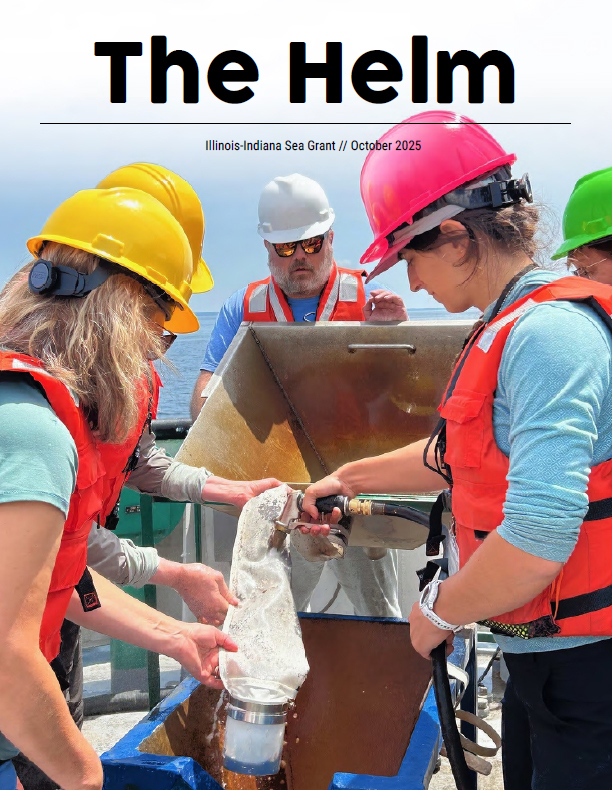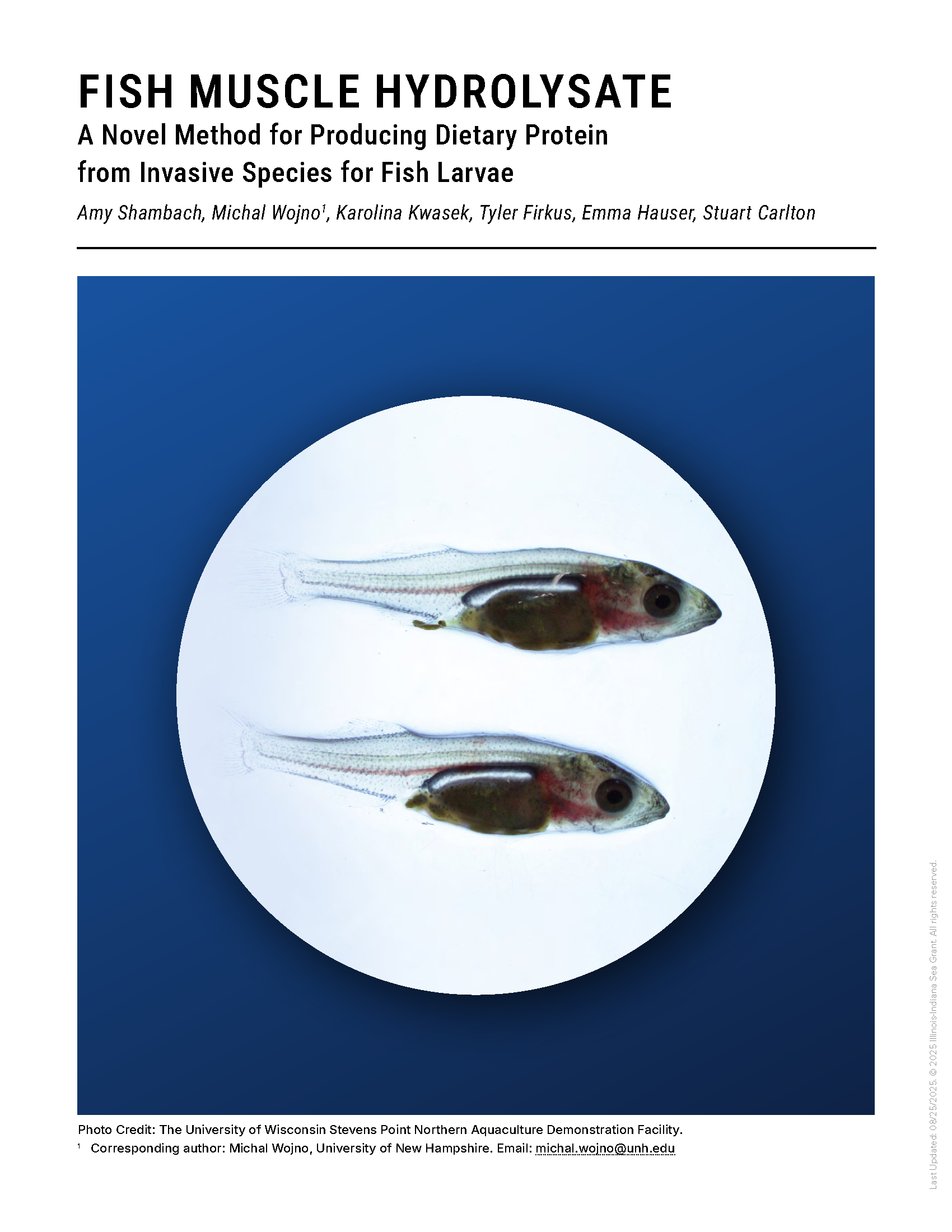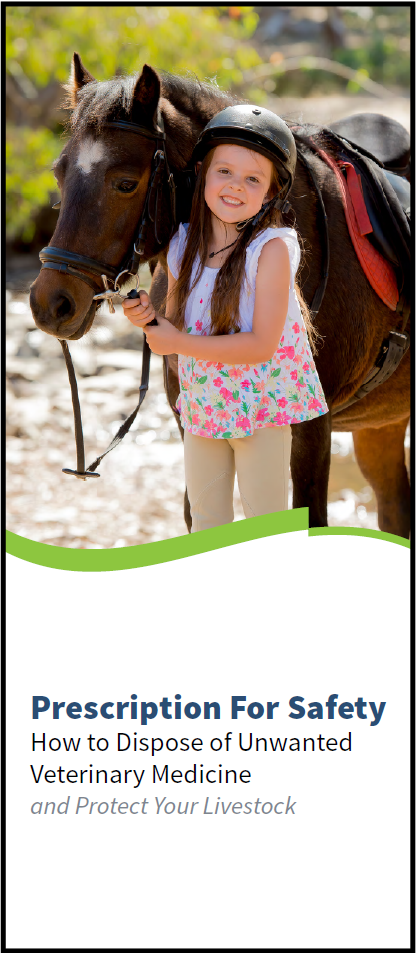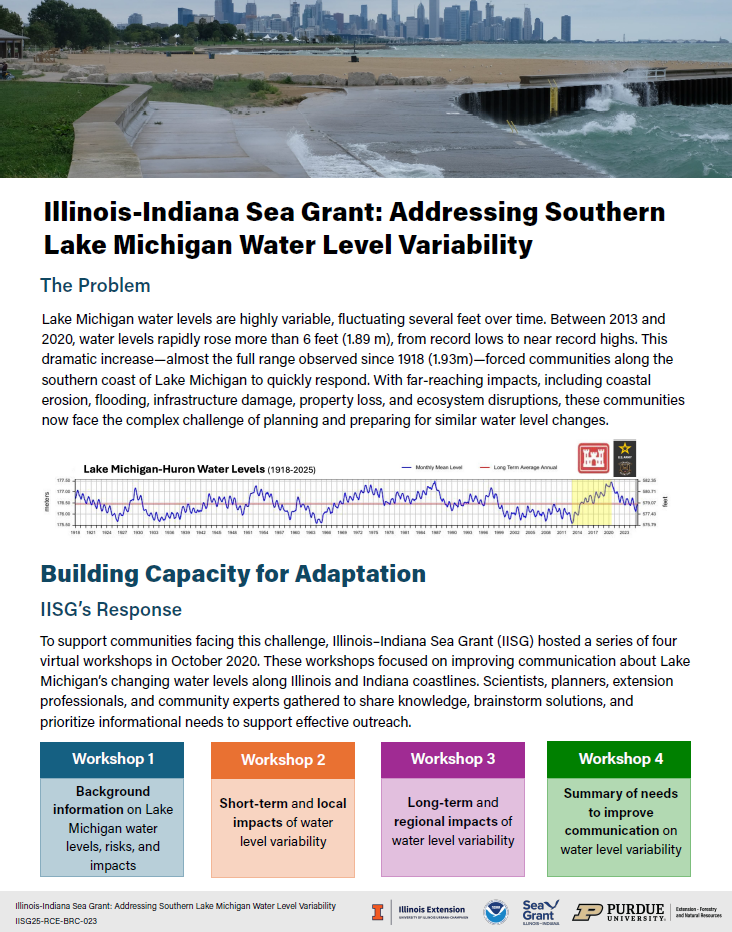
File Size: 7.00 MB
Year: 2025
Illinois-Indiana Sea Grant’s annual magazine.
This issue highlights:
- Educators engage with Great Lakes scientists aboard the Lake Guardian
- Scientists and educators investigate Lake Michigan biological hotspots
- IISG looks back on 30 years of AIS outreach
- Coastal communities face challenges in managing beach sand and structures
- Stuart Carlton is the new IISG director
- Tomas Höök reflects on his Sea Grant legacy





